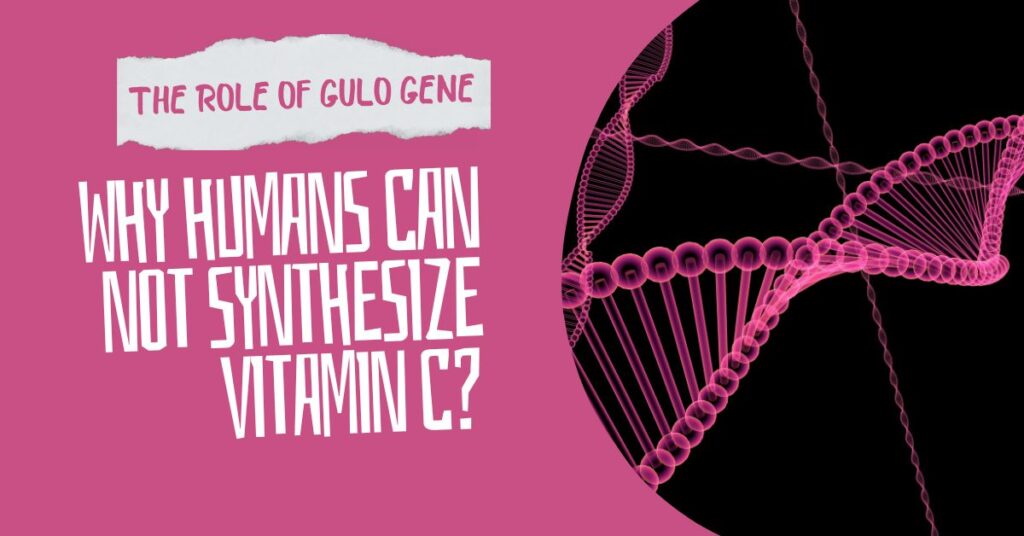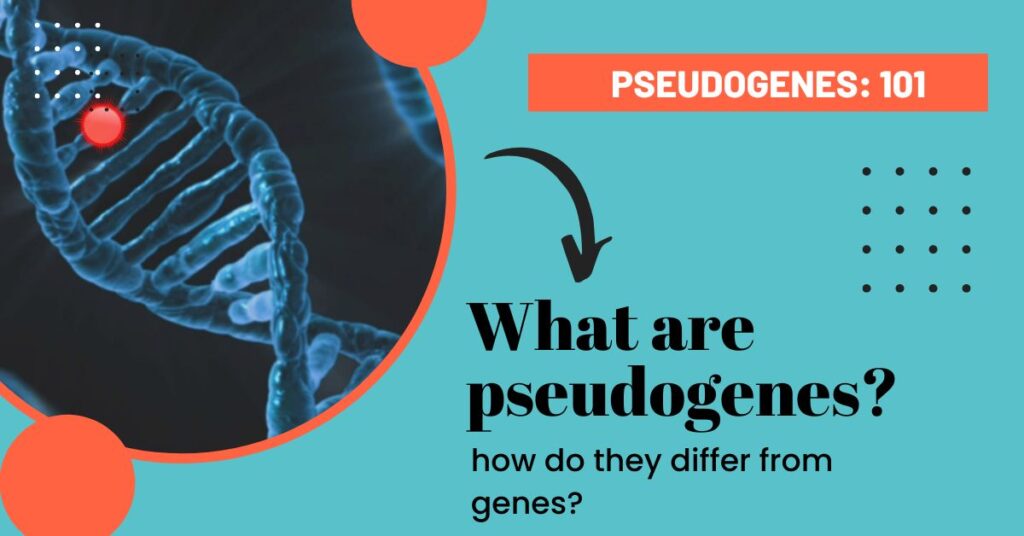“The unitary pseudogene- GULO (L-gulonolactone Oxidase) is translationally inactive for the human genome and is believed to be responsible for the inability to synthesize vitamin C. Let’s see what evolutionary event drives this change and why it occurred.”
Genes are functionally active DNA sequences that can synthesize various proteins while pseudogenes, contrary, are functionally inactive to do the same job. We are exploring the miraculously mysterious genomic elements– pseudogenes. They are mentioned as ‘inactive’ or ‘junk’ but in fact, execute important functions.
Oranges and lemons are important diet ingredients in our daily meals. But do you know unlike other biomolecules we are incapable of synthesizing vitamin C on our own? We need to rely on external sources to punch up our daily requirement of vitamin C.
Vitamin C is an important biomolecule for our health and immunity which give us the power to fight against foreign invaders. Despite being so important for us, why do we humans and some other mammals can’t synthesize it on our own?
The answer lies within the non-coding portion of our genome which comprises the pseudogene-GULO. Let’s see how the pseudogenization of GULO is associated with our incapability of producing vitamin C. We will also collect and discuss crucial information on this pseudogene and understand the biosynthesis of vitamin C and its evolutionary context.
This is the article from the pseudogene series. You can read our previous two articles to better understand this topic.
- What Are Pseudogenes and How Do They Differ From Genes?
- How Different Types of Pseudogenes are Formed?
Stay tuned.
| Name of the Gene | GULO |
| Full Name | L-Gulono-gamma-lactone Oxidase |
| Protein | L-gulonolactone Oxidase |
| Chromosome | 8 |
| Location | 8p21.3 |
| Size | 42Kb |
| No of exons | 11 conserved exons in mammals |
| Status in Human | Inactive |
Key Topics:
What is a GULO pseudogene?
GULO is a type of unitary pseudogene that is an inactive copy of the gene GULO (L-gulonolactone Oxidase) present in humans and many other mammalian genomes. It is located on chromosome 8 at 8p21.3 having approx. 10 exons (11 are conserved in mammals). It is approximately 32 Kb in length.

GULO activated genes can produce an enzyme L-gulonolactone Oxidase which plays an important role in the vitamin C biosynthesis pathway. It’s a kind of unitary pseudogene, as aforesaid, hence it becomes ‘out of action’ by ‘indel’ mutations acquired during the course of evolution.
Indels are insertion and deletion mutations. Other mutations that lead to the GULO gene inactivation are frameshift, silent and missense mutations. Notedly, it is not suppressed in all organisms. Several organisms have functional copies as well, work finely and produce the enzyme.
So depending upon the requirement of the species, it’s active or else, inactive; showing the case of convergent evolution. Take a look at the list of species having active and inactive GULO genes.
| Organisms with inactive/lost GULO gene | Organisms with active GULO gene |
| Humans | Most mammals and their primates |
| guinea pig | Fishes |
| Human primates– gorilla, chimpanzee and orangutan | Insects |
| capybaras | Plants |
| Fruit bats | Birds |
| Passerines and some parrots | Reptiles |
Related article: What is Copy Number Variation and How to Detect it?
The defect in catalysis:
Ascorbic acid synthesis is a complex biosynthesis process and starts with substrate Glucose, in mammals. In the last step, L-guano-g-lactone converts into ascorbic acid using the enzyme Gulonolactone Oxidase. This is a usual ascorbic acid synthesis process, however, due to the inactivation of the Gulonolactone Oxidase enzyme, the final step can not be completed and consequently, ascorbic acid (or Vitamin C) can’t be synthesized.
Biochemist Albert Lehninger studied the vitamin C biosynthesis pathway and found out about the defect of vitamin C deficiency in humans in 1957. Consecutive studies by Nishikimi and Yagi 1991, concluded that this defect occurs due to the inactivation of the GULO gene by mutations.
So unlike other vitamins, we need to rely on external sources for our vitamin C requirement. Vitamin D is an exception, we can get it from sunlight.
Vitamin C synthesis is a multistep process then only why Gulonolactone Oxidase gets the defect and becomes inactive, is still a mystery but a popular hypothesis suggests that that’s because other genes are so vital and involved in so many other pathways as well which produce important biomolecules.
Henceforth, only the GULO gene is supposed to be chosen for inactivation.
Why does this happen?
To better understand the underlying evolutionary event behind the pseudogenization of GULO, we have to go through some of the ocean explorations, way back occurred in history. Sailors died of some mysterious condition, later known as Scurvy.
Scurvy is a condition of vitamin C deficiency for a longer period of time which causes bleeding gums, fragile bones and skin spots. Patients may die from vitamin C starvation. John Woodall, a military surgeon, identified the condition and suggested consuming lime, lemons and oranges during ocean journeys.
Since then we unknowingly know that we can’t produce ascorbic acid on our own. By the way, that was the first clinical trial performed by Woodall J. In the early 19s, the case came into the picture. The picture even becomes more clear, after some genetic-level findings.
It’s important to discuss why it’s different from processed and unprocessed pseudogenes. Both processed and non-processed pseudogenes are formed by retrotransposition and gene duplication, respectively.
GULO pseudogene is a kind of unitary, hence, it’s become inactive by choice not by any forced evolutionary event. When our ancestors shifted their diet from meat to fruits and vegetables, vitamin C became naturally available to our bodies from external sources.
Therefore, it ‘intentionally’ acquired mutations to be inactive in order to control the consumption of vitamin C by our body. Evidence suggests that the present pseudogene was active in mammals 100 million years ago.
Interestingly, it wasn’t a universal event as other organisms, for example- plants do have the active trait of the GULO gene. So inactivation occurred for us after the evolutionary divergence of primates and mammals. It’s still active in some mammals as well.
Read more: Are Y-linked Traits always Expressed?
Then why is it there?
Our genome is a victim of losing many genes over the course of evolution because we no longer need them. When it realizes that if ‘some’ genes are insignificant and do not have any effect on the reproduction and the overall fitness of the organism, they are eliminated, slowly from the genome.
Furthermore, it’s arguable, other pseudogenes do have a pivotal role in DNA metabolism and epigenetic activity but why is the GULO pseudogene still there in our genome? You may have a question and it is valid too.
Scientific literature lacks clarity on why it’s there in our genome. As its persistence doesn’t directly affect an organism’s ability to survive and reproduce, it’s still with us as junk. Though the inactivation may disallow us to synthesize vitamin C but also have a positive effect on the activity of other genes.
One proposed theory suggests that it gives us a selective advantage over the production of hydrogen peroxide as a byproduct of the Vitamin C biosynthesis pathway. In addition, recent studies also demonstrate its potential role in epigenetic regulation for other genes as well.
I strongly believe that it is there because vitamin C is a crucial biomolecule for life on Earth. And therefore, by chance, if any organism can not get or metabolize vitamin C, using the inactive residues of the gene, our cell can activate the process again.
However, it is just my assumption as a geneticist. However, this process still takes thousands of years to even re-activate the mechanism.
Which mutations made this possible?
Mutations that lead to the inactivation of the GULO gene are insertions, deletions, point mutations, frameshift and missense mutations. One commonly reported mutation is a single nucleotide change in the open reading frame that causes premature stop codon and non-functional protein.
The GULO gene commonly suffers from major exon deletions. Deletion of exon 8 is also significant among many organisms that cause inactivation of the GULO gene.
However, it’s notable that mutations causing gene inactivation vary from species to species and are acquired during different evolutionary events and at a different course of time during the evolution process.
Wrapping up:
In conclusion, the mystery behind why we can’t synthesize our own vitamin C is solved, perhaps but many surrounding questions related to this topic are still unclear and unsolved. For example, only the GULO gene is inactive.
The GULO gene is important for those organisms that are capable enough to synthesize their own vitamin C. Although, studies suggest that it is important for us too. Hope so, in the future we will get more clarity on this topic and on the role of this gene in our genome.
I hope you like this article. Please share it and subscribe to our blog.


